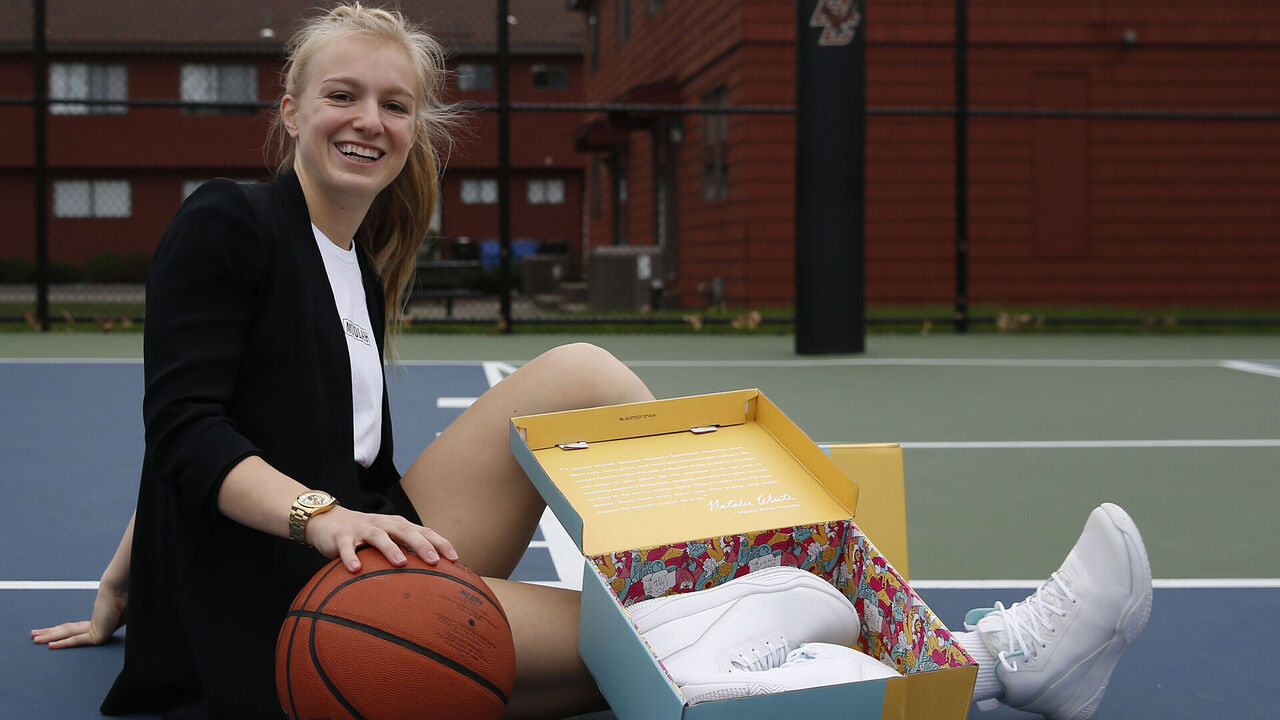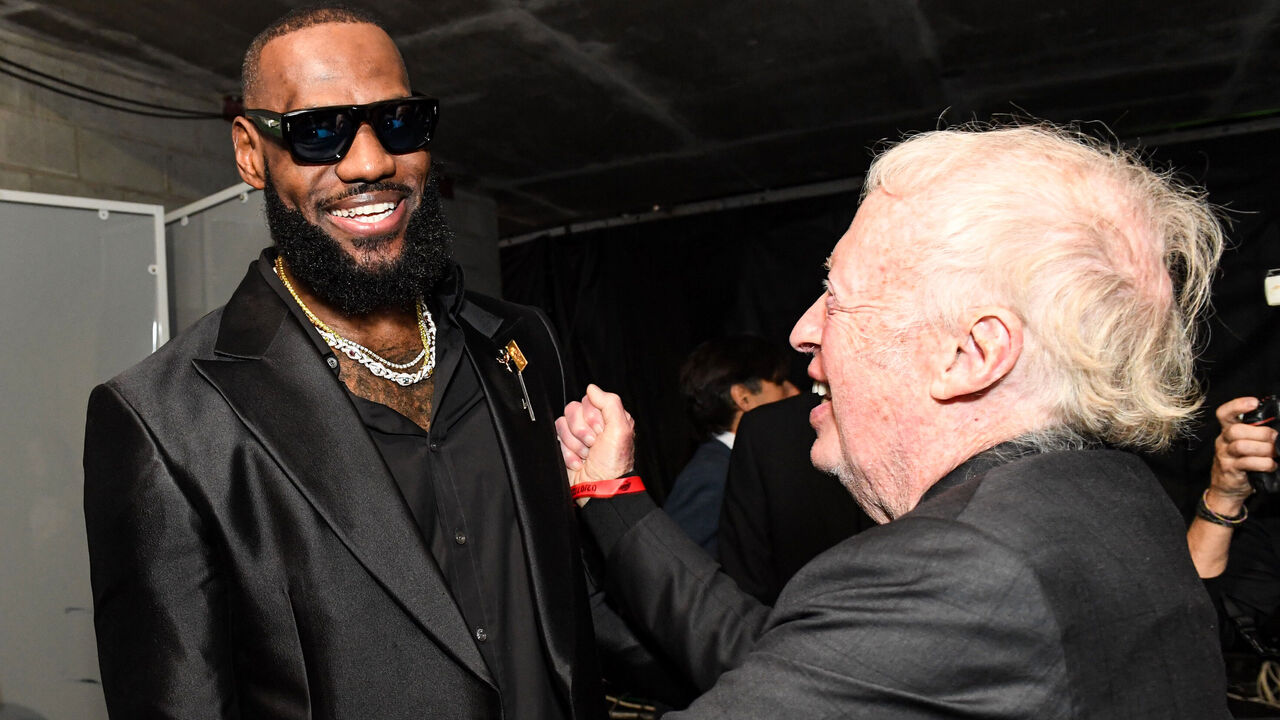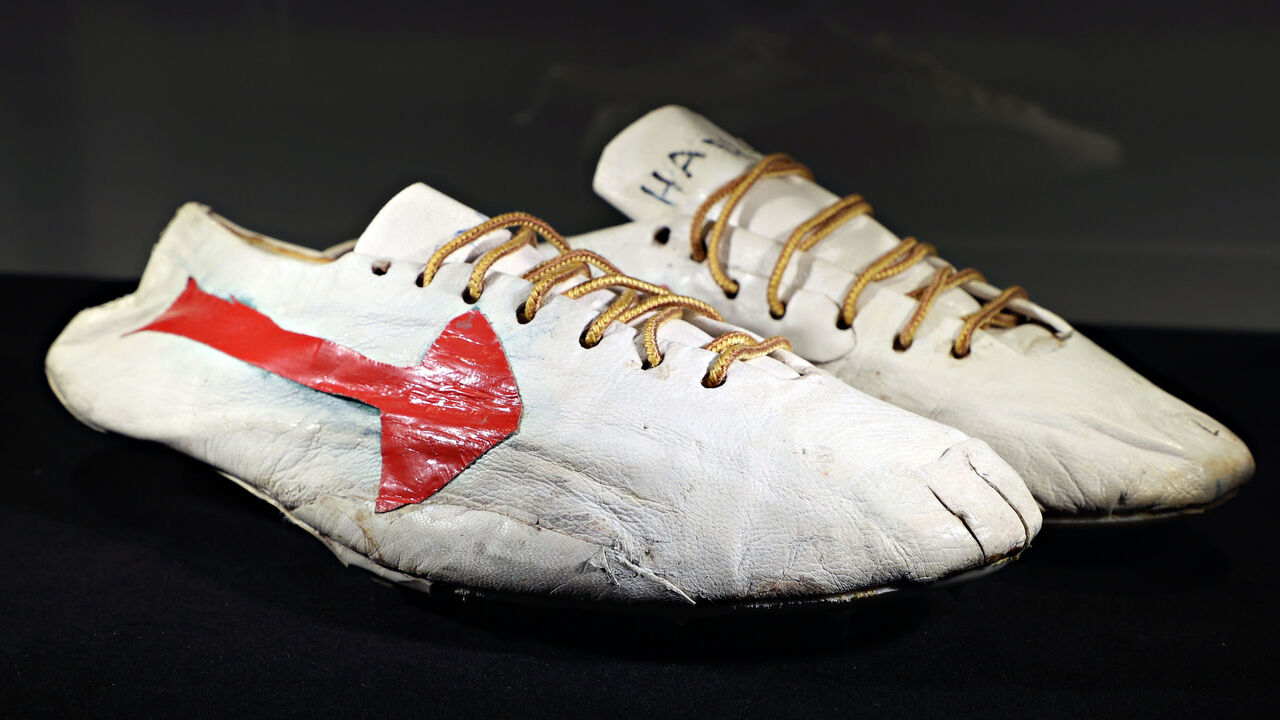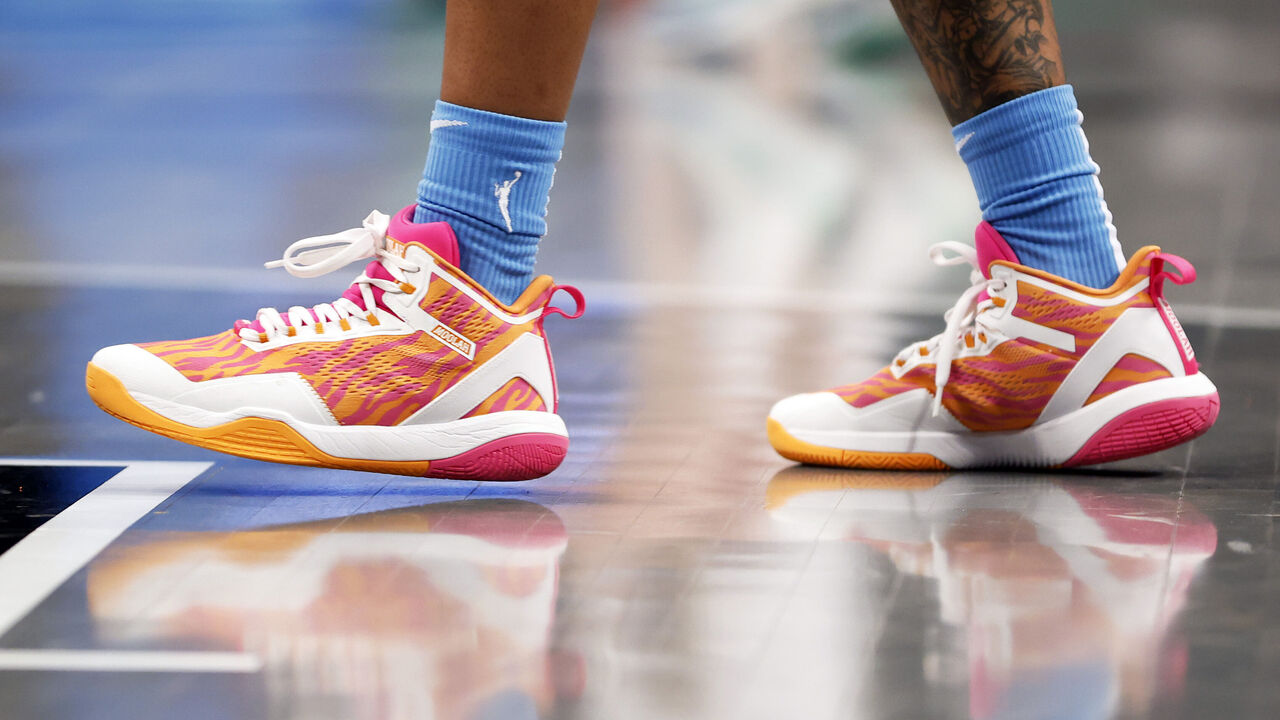How new sneaker brands are hustling to upend the industry Goliaths
Natalie White isn't like the millions of hoopers who lace up their Nikes and Jordans to play pickup basketball worldwide. When she hits the court - whether in a legendary New York City streetball game or playing pickup in whatever gym will have her from Brooklyn to the Upper West Side to Harlem - you'll most likely catch her wearing a shoe that doesn't even have a name yet.
White, founder of one of the rising shoe brands making noise in the United States, tests every single shoe developed by her company before it goes to market. Pickup basketball isn't just a hobby; it's her testing ground. It's part of her process in trying to stand out in the highly competitive and highly lucrative athletic shoe market.
"I wear test all of our shoes that go to market - including our kids' line - every single week from idea of the shoe, initial design, until launch," White said.
She founded Moolah Kicks in 2020. The company develops shoes specifically for women and is sold in 450 Dick's Sporting Goods locations throughout the United States. The brand boasts strong results: In October 2023, it reported a 112% yearly increase in retail sales and a 147% increase in gross revenue. With the recent addition of the Neovolt Low and Triple Double models, Moolah now has a shoe designed for every position on the basketball court.
Rather than an anomaly, White and her brand are the epitome of a growing trend in the sneaker market. Consumers are consistently prioritizing performance and customization, something the big brands haven't necessarily delivered on.

"Before the pandemic, we were talking a lot about small being the new big. The idea that kids were still going to wear sneakers, jeans, and hoodies, but they wanted to wear different brands than their friends had," footwear industry analyst Matt Powell said. "We were seeing some real strength in smaller brands, and that has continued. None of these brands are in a position to challenge Nike for supremacy. But they're all taking share from Nike and from Adidas. The composition of the sneaker wall will look different in two years than it does today because of this phenomenon."
Nike and Adidas have been the leaders in sneaker culture for decades. But if there's one thing about dynasties, it's that they don't last. And small changes are afoot that could signal the slow dawning of an eventual new paradigm in the shoe game. In September, Reuters reported data from Altan Insights showing Nike's Jordan brand shoes declining in resale value, and data from the resale platform StockX showed nearly a 57% value decrease since 2020. Yes, those numbers don't impact Nike's bottom line, but they are a somewhat reliable gauge of consumer interest. That interest, it seems, has begun to shift elsewhere.
"During the pandemic, the general wisdom out there was: Don't take any risks, lean on your bestsellers, and try to get through the pandemic without any serious damage," Powell said. "And when you're playing it safe, you're not innovating. Innovation really requires a certain amount of risk and investment in something that may or may not pan out."
It's not that Nike and Adidas haven't been innovating. Nike continues to focus on improving performance for elite athletes, but its emphasis on nabbing big-name partnerships with athletes to preach about its on-court capabilities might be netting diminishing returns. "Brands need athletes performing at a high level wearing their products," Powell said. "It gives them authenticity and credibility. That truism is never going to go away. But I think that brands are spending far too much money on athletes and really not seeing the return, at least in terms of merchandise sales, to offset those costs."

Adidas took another celebrity approach, leaning into style innovations by partnering with rapper Kanye West, now known as Ye. This partnership, initiated in 2013, birthed the Yeezy line, a fusion of avant-garde design and innovative technology. The Yeezy line subsequently raked in more than $1 billion annually for Adidas. The collaboration expanded into apparel and accessories, emphasizing minimalistic athleisure wear and high-concept sportswear.
The Yeezy line's success transcended sneaker culture, resonating globally in the high-end streetwear and fashion scene. The partnership represented a convergence of artistry and technical expertise, signifying a new era in the fusion of music, fashion, and design. As The New York Times reported last week in an investigative story looking back at the partnership, the Yeezy line represented a significant portion of Adidas' bottom line. But in October 2022, the two giants parted ways after weeks of antisemitic and erratic public remarks by Ye.
Adidas will have to find another avenue to excite consumers. It's not that Nike and Adidas aren't constantly looking to what's next, but they're no longer the only ones doing it. Smaller, more nimble brands that have been hyper-focused on innovating might be proving where the real interests of consumers are.
"Brands that look new and fresh, like Hoka or On Running, are doing really well right now," Powell said. The Swiss brand On reported in August that its second-quarter net sales increased 52.3% over 2022 to about $506.5 million - a high-water mark for the company. Projections have the brand doubling net sales by 2026.
Powell points out that the bigger contenders for market share can take on the Nikes and Adidas of the world due, in part, to their deep pockets. "One other piece of the formula for Hoka and On was that both brands were very well capitalized," he said. "It's extremely expensive to develop a shoe. You have to invest hundreds of thousands of dollars in the shoe before you've even sold a pair. There are only dozens of shoe brands out there when there are hundreds and thousands of apparel brands. It's much easier to make a T-shirt or a hoodie than it is to make a shoe. So that's part of the formula."
Powell's point is that Moolah could have trouble competing in the space when push comes to shove despite investment from Dallas Mavericks owner Mark Cuban - and that's why sneaker innovation is rare.
But newcomers can find their opportunity by listening to the niche needs of their target market. It's the same formula Nike used in its early days to establish itself against the brands that had already become popular in the first half of the 20th century, like Keds, Converse, Adidas, and Puma.
In the early 1960s, a track-and-field coach, Bill Bowerman, and his former athlete, Phil Knight, joined forces to embark on a remarkable journey redefining the global athletic footwear and apparel industry. With a shared vision of revolutionizing the world of sports and performance footwear, the duo established Blue Ribbon Sports (BRS), initially operating as a distributor for the Japanese shoe company Onitsuka Tiger. Bowerman and Knight believed the running shoes on the market at that time - primarily manufactured in Germany - could be better tailored to the needs of runners. Tiger, which had already established itself in Japan, proved to have designs almost immediately popular in the United States when BRS began distribution.

Nike's customer-centric approach resonated with a growing community of athletes, particularly after BRS designed a shoe for Tiger with support tailored specifically for runners. This shoe immediately became a bestseller. A falling out with Tiger ensued, following which BRS rechristened itself as Nike and renamed this shoe the Nike Cortez.
With a newfound identity and a burgeoning reputation for innovation and superior craftsmanship, Nike solidified its position as a trailblazer. Today, Nike stands as an enduring symbol of athletic prowess, performance excellence, and unwavering dedication to the pursuit of greatness.
But it isn't serving every market with the same attention to detail. That's where founders like White have seen opportunities. "Every single thing we do is putting women's basketball at the forefront," she said.
When she was a student at Boston College, an ad stood out to White that showcased four WNBA athletes promoting sneakers named after NBA players. "When I looked into footwear, and I looked into this issue, it was clear that there's a performance implication because the female foot form differs from the male foot form in four key places." This hyper-focus on the needs of specific consumers - not just women in general but for each particular position in women's basketball - has been the key to fuelling Moolah's innovation and subsequent success.
"Our exponential growth timeline is in part due to this symbiotic relationship that we have with women's basketball. Our women's basketball community has loved what we're about, the vision we have for the future of women's basketball, and our products," White said. "In turn, they are making the company stronger. We are making them stronger by, of course, getting them products that fit their feet, but also marketing opportunities, sponsorship opportunities, and opportunities to grow their platform."

White also recruited a slate of rising players to represent her brand. "The biggest difference is that the sneakers actually fit to my feet because they're made for women, and I don't have to be breaking them in," said Caroline Ducharme, a guard for the University of Connecticut women's basketball team. "I'm really proud to wear them and be a part of a brand I stand behind, as they're the only brand exclusively focused on women's basketball."
White keeps her customers in mind by being a relentless product tester. "When I try out the different models, it's through every single stage that we're thinking things like, 'OK, this is delivering on stability? Could it be more stable when I'm doing lateral movements? We have a synthetic knit as the upper, do we add maybe a harder plastic piece? Then I work directly with our designer, our developers, and our factory partners to better cater to the goal of that shoe."
It's not just athletes who have taken note of Moolah Kicks, but collectors, too. "I remember on a couple of our first models, I had a few people write a note to me saying they were sneakerheads. They said, 'I'm buying this for my daughter who can't wear them yet. When she turns 21 or 18, she will be in disbelief that I have a very first model of Moolah Kicks," White said.
The potential for growth by focusing on those left behind by the big brands is hard to deny but equally hard to consistently meet. "Brands like Moolah are really bringing in a woman-made shoe made for a woman's foot, and I think that's going to revolutionize the marketplace," Powell said. "(White) really is addressing a very serious need. But there will remain pressure on her to stay fresh and new. And that's really challenging."
Despite being difficult, expensive, and something very few succeed at, Powell is convinced the sneaker market will continue to thrive with the right focus. "Right now, the consumer desire for new and different is probably the strongest it's ever been," he said. "The brands that are succeeding are bringing fresh products to market all the time. And that's very much needed."
Jolene Latimer is a features writer for theScore.
HEADLINES
- Murray drops season-best 45 vs. Mavs as Nuggets win in blowout
- NBA-leading Cavs snap Pacers' 6-game winning streak
- Report: Butler reiterates trade request in meeting with Riley
- Roundball Roundtable: Clippers, Pacers poised for big 2nd half
- Giannis' 50th career triple-double helps Bucks end Kings' 7-game win streak